Advance With The Times: 5 Expert Tips for Effective Social Media Strategy
Here’s a quick recap of all the things that have happened within the social media landscape in the past month:
- Meta launched a new app to compete with Twitter.
- Twitter, on the other hand, changed its name to X Corp.
- LinkedIn launched a major algorithm change.
- Threads lost more than 50% of its users in a week.
- Instagram rolled out massive updates.
The icing on the cake? These are just the apparent social media changes. Many behind-the-scenes changes have occurred in how we perceive social media in modern times due to the launch of artificial intelligence (AI), deep fake technology, and other software.
Needless to say, social media is a changing numbers (and changing behaviors) game everywhere. Even still, more than half the world’s population is an active social media user, so you can’t afford to lose your social presence.
We understand it’s really a love-hate situation, but seeing that social media is going nowhere, it’s also time to advance our social media game.
So, let’s dig into some expert tips for creating an effective social media marketing strategy (at a time when everything around you is changing).
1. Authenticity still matters
In 2023, everyone jumped on the AI bandwagon. But, because AI relies on old text, conversations are starting to look regurgitated and, quite frankly, boring, unempathetic, and ingenuine.
Your readers are no fools, either. They’re on social media to entertain themselves, get value, and become a part of a human-to-human conversation — something that can’t be replicated by AI.
And many folks (including social media visitors and experts) are bringing up the conversation about the importance of authenticity on social media platforms.
For example, here’s a newsletter excerpt written by Kasey Jones:
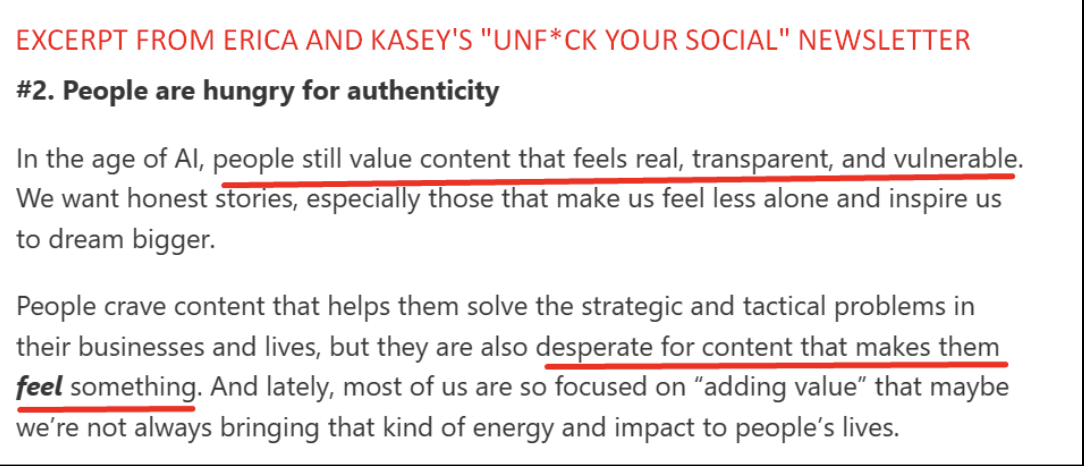
Here’s another user whose thoughts on social media resonated with others:
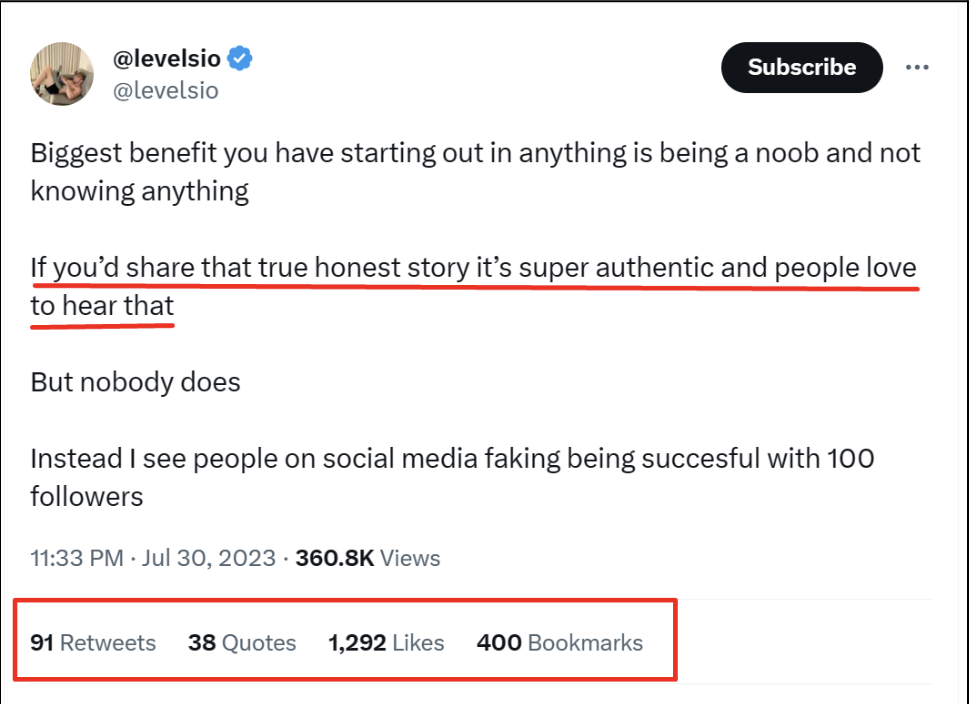
Experts like Emily Onkey also reflected the same sentiments. In her own words, “Though AI content writing tools save tons of time in your content pipeline, keep in mind that people turn to social media to engage with posts that are for humans by humans.”
“So while you can use examples of your brand’s best copywriting to set parameters for an AI tool to follow, your posts must also include anecdotal stories and data.”
Aside from using anecdotal stories and data to make social media authentic, you can also:
- Share predictions about your niche. However, to stand out, please ensure you use carefully curated predictions from thought leaders that aren’t too vague.
- Get insights from subject matter experts (SMEs).
- Leverage user-generated content (UGC).
- Stay true to your missions and values.
- Showcase thought-leadership content.
- Highlight real customer reviews.
- Add a human touch.
Now, let’s look at a few examples in action. Henry Meds repurposes customer reviews it receives on Trustpilot as social proof on its marketing channels.
Not only does this build trust with customers via social proof, but it also fills their social media content calendar with quality content. When it comes to social media, publishing content consistently is the secret recipe for success.
Clean Origin’s social media content focuses on showcasing the process and origin of their lab-grown diamonds. They’re transparent about their production methods, highlighting the eco-friendly and ethical missions behind their diamonds.
Here’s an example social media post that walks through the founder’s story and the mission behind the brand:

This transparency helps build trust with their target audience, who are often concerned about the environmental impact of traditional diamond mining. Social activism is here to stay. If you’re already doing your part to better the future of our planet or society, shout about it from the rooftops.
And what better place to do it than social media?
2. AI can help you optimize your processes
We know that AI can’t replicate the human touch, but it’s still an important and crucial tool for social media activity in 2023.
For example, with AI, you can:
- Find out areas of improvement. That’s to say, if you’ve created a content strategy, you can feed the information to ChatGPT or a similar solution and ask it to find areas of improvement based on your current social media metrics. Try to replicate the type of content that performs best. Add this to your new social media content strategy.
- Get inspired. You can ask generative AI to share inspiration, create a structure, or write prompts to help you improve your social media game. You can also play around with AI to ask for headline and catchphrase alternatives (e.g., Eric Doty from Dock uses it to write meta titles and meta descriptions).
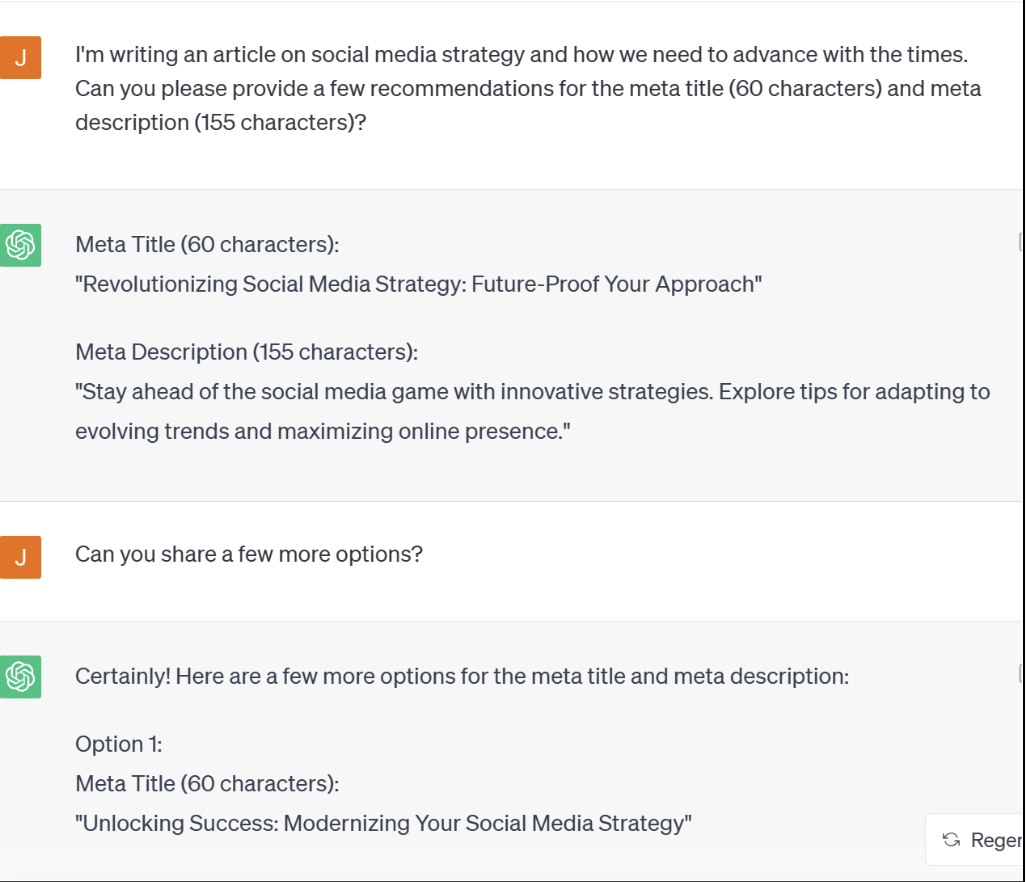
- Test for optimization. Use social media software led by AI to A/B test different elements of your social media content, including content length, send times, titles, tone, etc. Once the results are in, you can adapt your social channels/strategy accordingly to boost engagement rates.
- Acquire and segment data. “Use AI to collect data from social media engagement, chatbots, business website queries, live help, etc., and then have it segment that information to understand topics users are actually curious about,” advises Ryan Rottman, co-founder of OSDB Sports. (You can also use technologies like Sparktoro to understand customer sentiment across various channels.)
- Automate tasks. Tasks like content scheduling, monitoring activities, sending messages/follow-ups, etc., can easily be automated with AI to achieve your business goals. You can even automate competitive analysis to give you an edge over the competition.
- Keep up with trends. You can ask AI to set up automated reminder updates about the latest trends and topics it’s seeing in a particular niche or across social media networks.
3. It’s time to tap into social commerce
With things like massive budget slashes, inflation at an all-time high, a recession on the horizon, and layoffs happening left, right, and center, companies are now looking forward to seeing the results their content marketing efforts have brought.
That’s to say, they’ve invested the money needed to nurture the lead, and now they want people to buy their products.
So, what’s the one way to get customers to buy your product? Well, it’s by making it as convenient as possible for them to buy. And there enters social commerce.
Leather Cult, a brand that specializes in selling handcrafted leather jackets, does an excellent job in this regard. It uses Pinterest, a common source of fashion inspiration, to make it easier than ever to purchase one of its jackets.
Clicking on the link directly below the product images brings a user directly to the product page for purchase. It’s that simple.
The less friction in the buyer’s journey, the more likely the customer will follow through with the purchase.
So companies that hadn’t previously invested in creating their online shops, featuring shoppable videos, and optimizing their product profiles, will need to integrate these tasks into their social media strategy.
Even TikTok is jumping on this bandwagon. They’ve recently introduced TikTok Shop, an integrated e-commerce solution.
And it’s taking off like wildfire. Small business owners are reaping the rewards, as TikTok is currently boosting these short-form videos that feature TikTok shops in their algorithm. Strike while the iron is hot.
4. Create once, distribute forever
“Social media depends on large quantities of content. You can post multiple times a day, and it’s still not enough. I’m reminded of what someone taught me early in my career: “On social media, you need to repeat yourself at least ten times to be heard,’” says Coty Perry, CMO at Anglers.
“What you can do is create an original post manually, then have AI create new versions of that post to get your message out there in new ways. A short LinkedIn how-to guide can become multiple Instagram posts, a different Facebook version, a TikTok video, and many, many tweets. Doing that manually would take hours.”
Distributing content on multiple social platforms is a strategy that not just Coty but many other experts agree with too.
Just a word of advice before you begin to distribute social content: try to make the content platform native.
For example, Instagram relies heavily on memes, whereas LinkedIn relies on value-added posts. You can keep the same examples and takeaways but try to change the structure and tone of your content depending on the platform.
And to help you with all of the heavy lifting, add a free social media management tool to your tech stack. That way, you can spend less time on the tedious aspects of publishing and more time creating your next viral piece of content for repurposing.
5. Tap into the goodwill of others
In today’s times, the credibility of genuine recommendations and relationships outweighs even the best social media strategies, which is why many experts (like Kaleigh Moore) recommend investing in para-social relationships on social media.
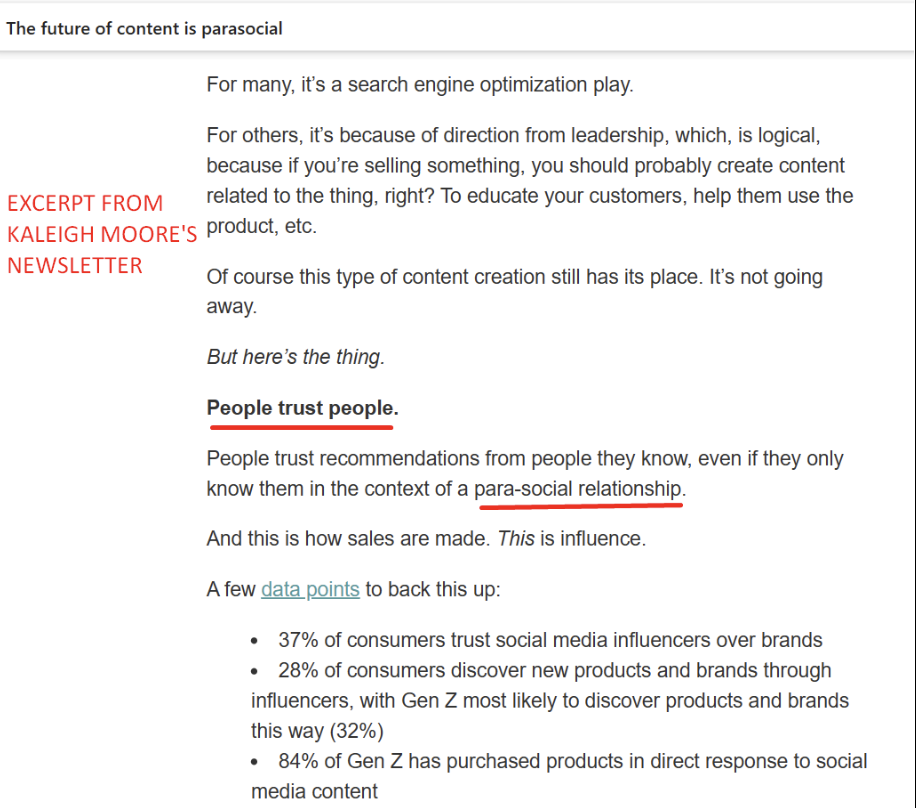
Don’t limit yourself to only partnering with influencers you think would be a good fit for your brand (although that’s a great way to achieve your social media goals, too!).
Instead, focus your social media marketing efforts on the niche communities your customers are hanging out at. For example, if you sell a social media management tool created for social media marketers, try to hang out at places where agency owners and other social media marketers hang out. In this context, these communities would be Superpath, Exit Five, and TOFU.
Doing so will help you identify the people with real influence and thought-leaders in the space who you can collaborate with later to improve your sales (for example, if someone like Jimmy Daly, a marketer and the co-founder of Superpath were to push a product, the chances of others buying are quite probable).
Another tip that might be helpful is to build these para-social relationships by yourself by investing in the personal brand of your employees and brand ambassadors.
Consider Triple Whale as an example. Its employees, who have a massive following (read: social media presence) within their niche, act as ambassadors for the brand (by promoting the product’s importance, the company culture, and product features), which eventually helps build brand awareness and credibility — the ultimate social media marketing goal.
Learn how to master social engagement with Socialnomics
There’s no saying what the future of social media campaigns could look like. It might be possible that the entire “social networks” tangent could be a different game from tomorrow onward or that the same social media channels might reign in importance even ten years down the line.
But, regardless of the future, there’ll be changes coming (either minor or major), and you can future-proof your social strategy by keeping in touch with all these changes and updates on Socialnomics.
Our website is a curation of the best content across topics like digital, social media, business, and mobile. And all you need to do to keep up with these topics is subscribe to our newsletter — The Skinny (it’s free to opt-in, and all the latest information is directly sent to your inbox!).
Are you ready to take your social media marketing strategy to the next level? Here’s to the success of your next social media marketing plan.


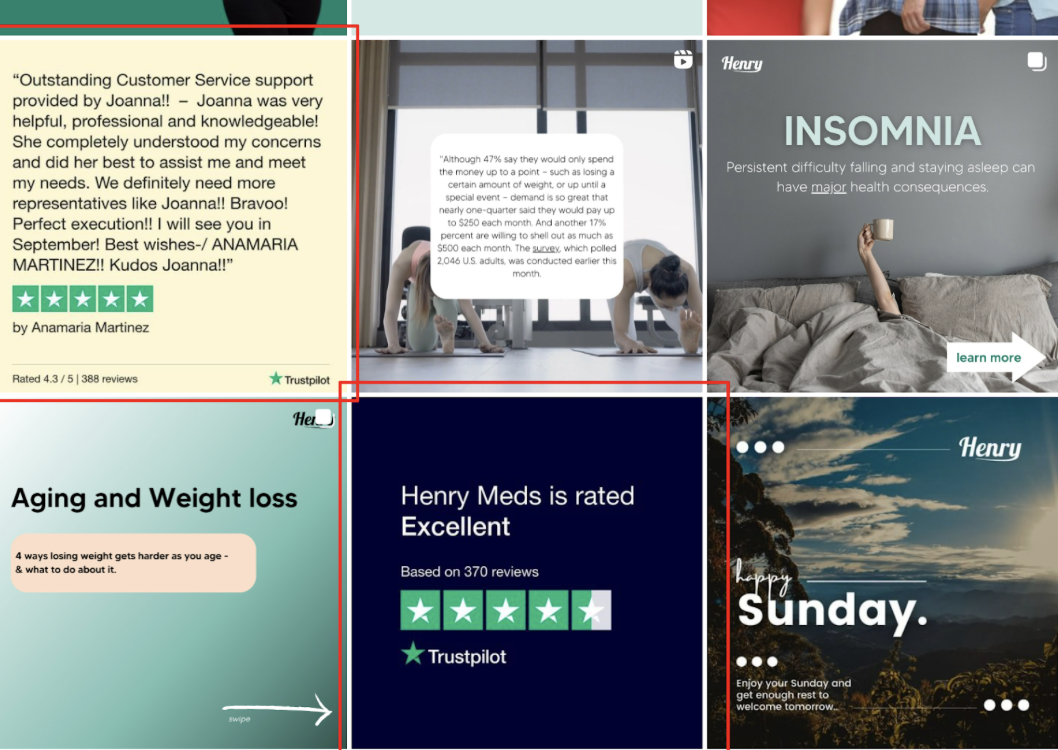
 Image Source
Image Source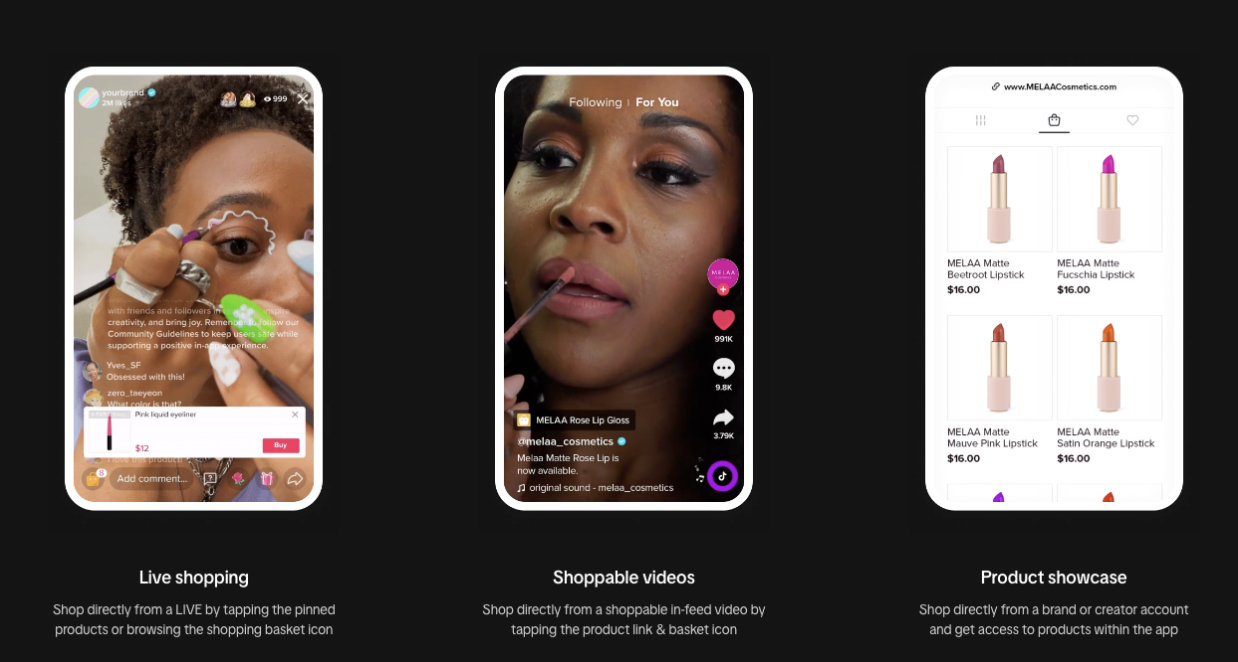 Image Source
Image Source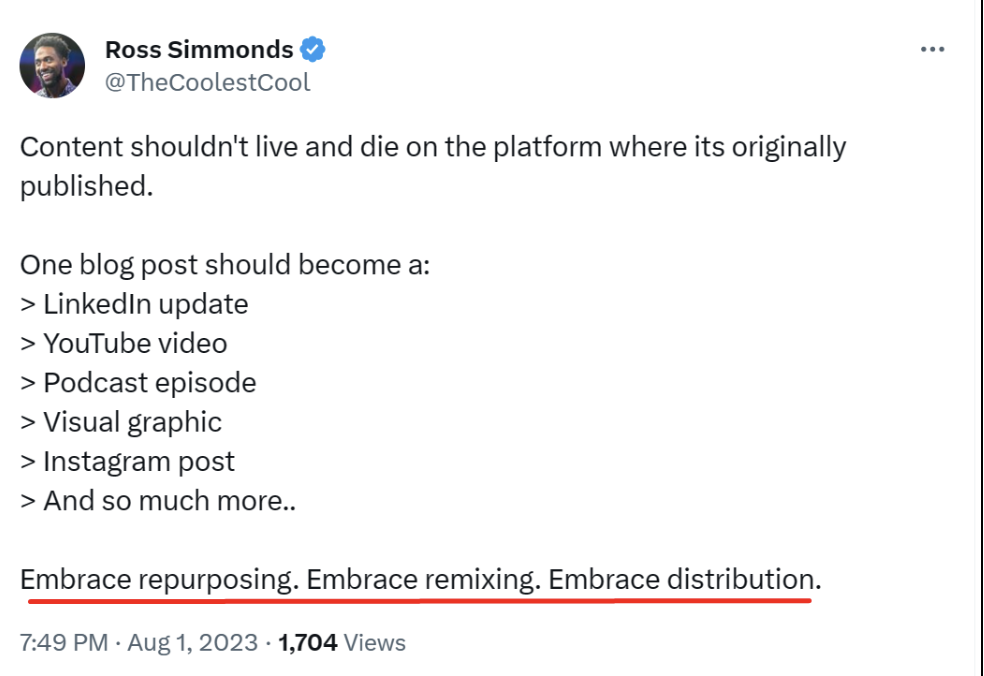 Image Source
Image Source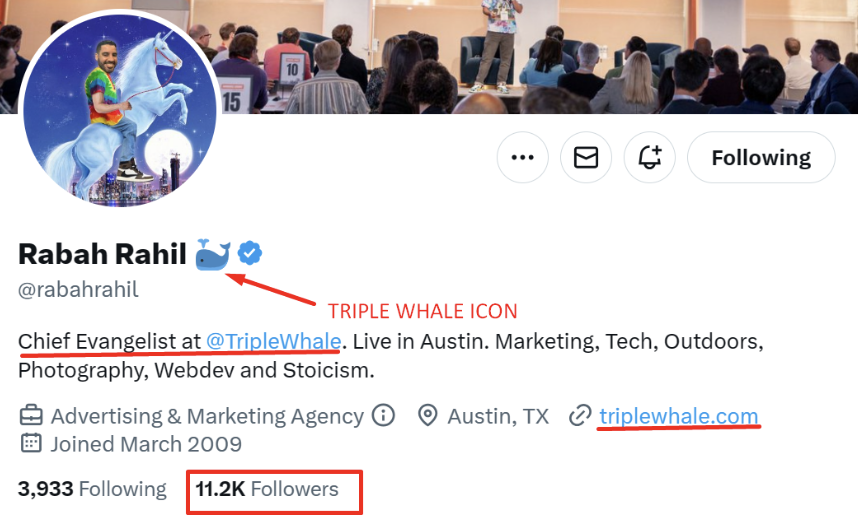 Image Source
Image Source







